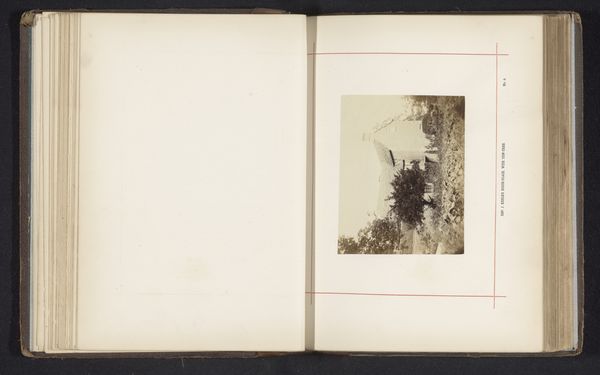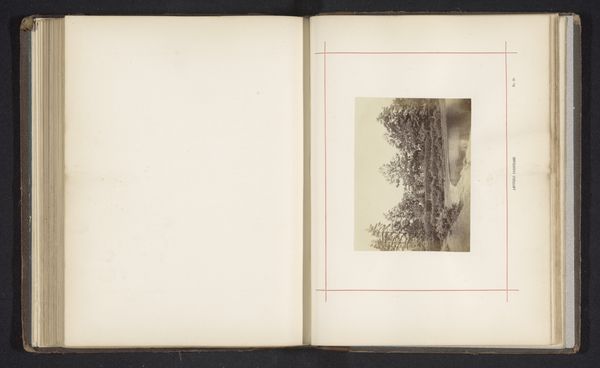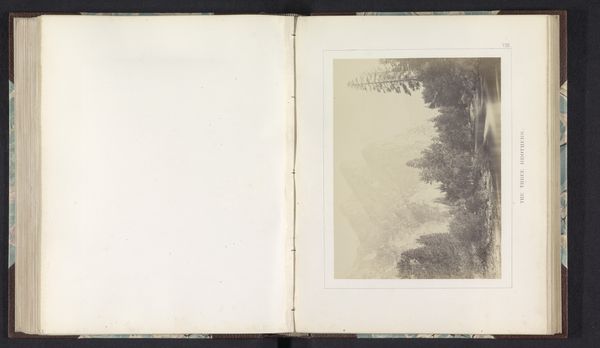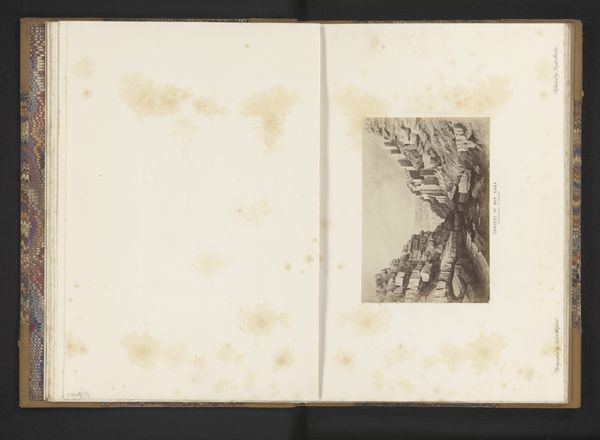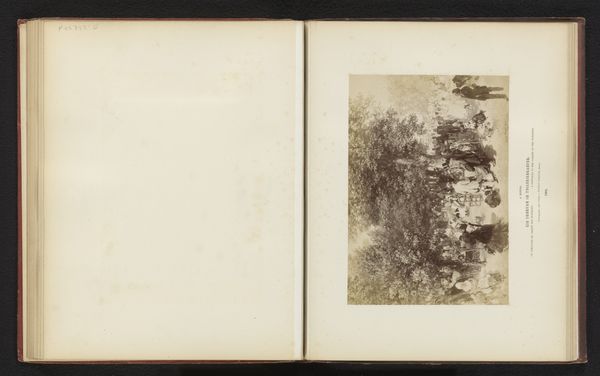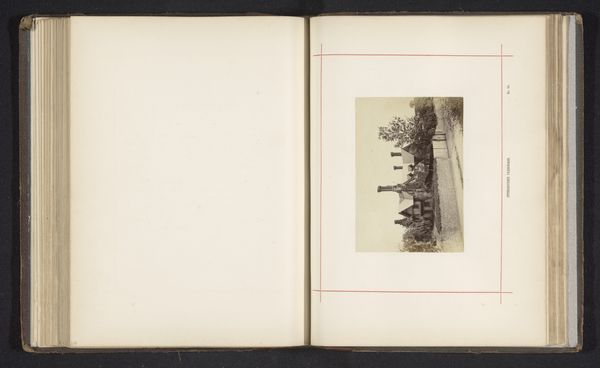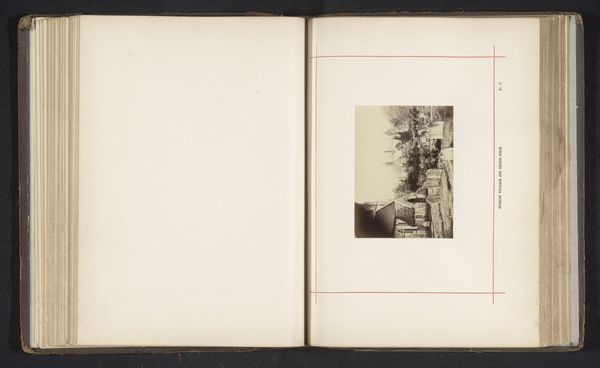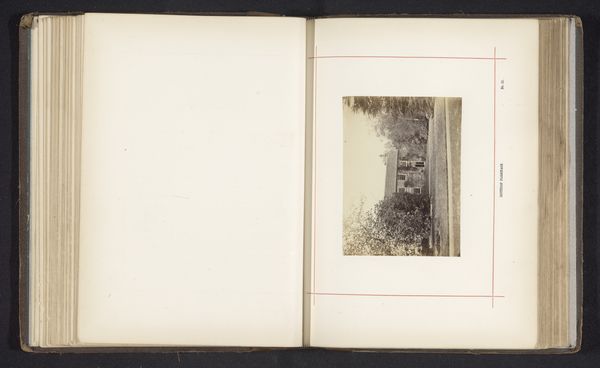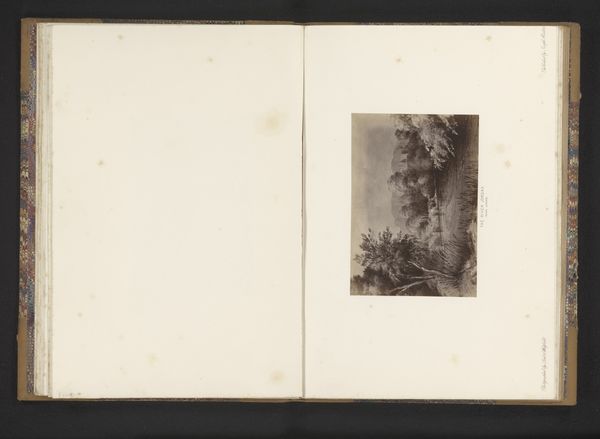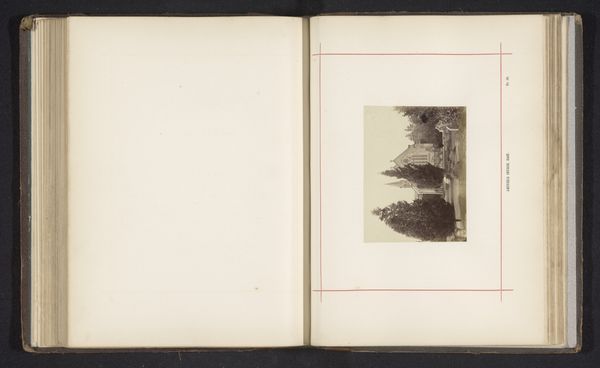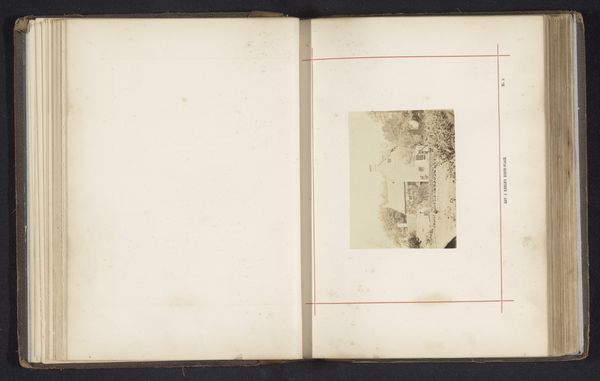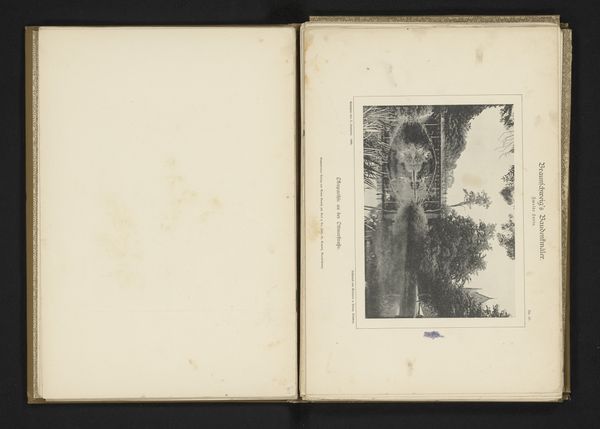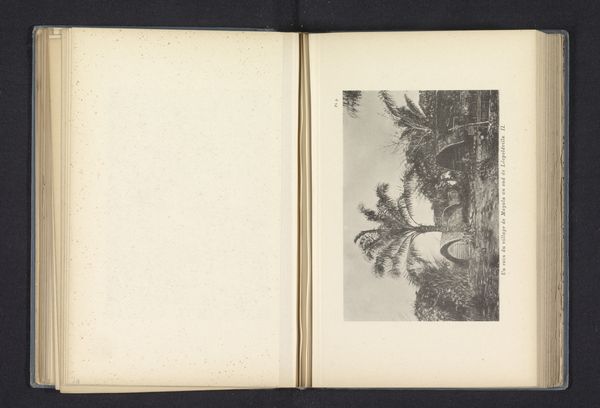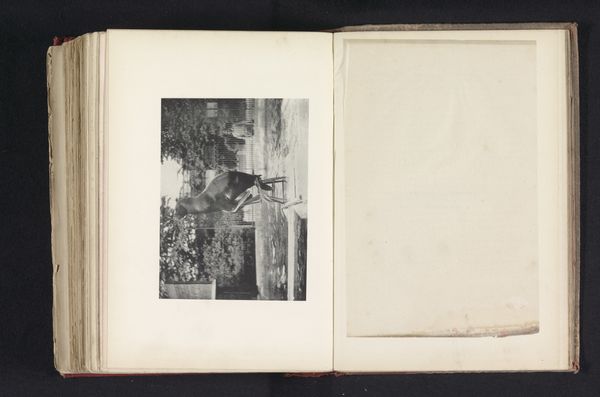
Dimensions: height 91 mm, width 110 mm
Copyright: Rijks Museum: Open Domain
Curator: This albumen print, taken before 1866 by William Savage, presents a view of the All Saints' Church tower in Hursley. What is your initial impression of this landscape photograph? Editor: It evokes a strong sense of stillness. The monochromatic tones and the soft focus lend the scene a dreamlike quality, almost as if suspended in time. The verticality of the trees and church pull the eye upward. Curator: Indeed. Viewing it through a contemporary lens, the stillness can be interpreted as reflective of the socio-political context. Consider the pervasive influence of the church in Victorian society; its presence, physically imposing in the landscape and metaphorically in people’s lives, demands contemplation of power structures and social control. Editor: While I agree with situating the work within its social environment, I'm drawn more immediately to the compositional balance. Savage uses the framing of trees to create a visual rhythm, playing with light and shadow to give depth to a relatively flat plane. The texture of the albumen print also softens the sharp edges, unifying the pictorial space. Curator: And yet, that softening also perhaps mirrors the period’s deliberate romanticisation of the rural idyll, a glossing over of the complex social realities faced by rural workers. These images shaped perceptions, contributing to a narrative of pastoral tranquility which certainly wasn't everyone's reality. Editor: Certainly. Looking closely, one notices the subtle interplay between the geometry of the architectural elements, the church, and the organic shapes of the trees. The composition could even evoke an almost classical architectural construction, but the church in the distance disrupts this order, generating visual tension. Curator: These tensions between idealized representation and stark reality are central to understanding Savage’s work in its historical context. These carefully constructed scenes, while aesthetically pleasing, also offer insight into the ideological constructs of Victorian England, class, and gender. Editor: Perhaps, by noticing the material elements of photography--the surface texture and sepia tonalities--we also find a bridge between the personal perception and broader cultural contexts in understanding Savage’s historic work. Curator: Agreed. By balancing our approaches we can interpret an image with more complete awareness.
Comments
No comments
Be the first to comment and join the conversation on the ultimate creative platform.
